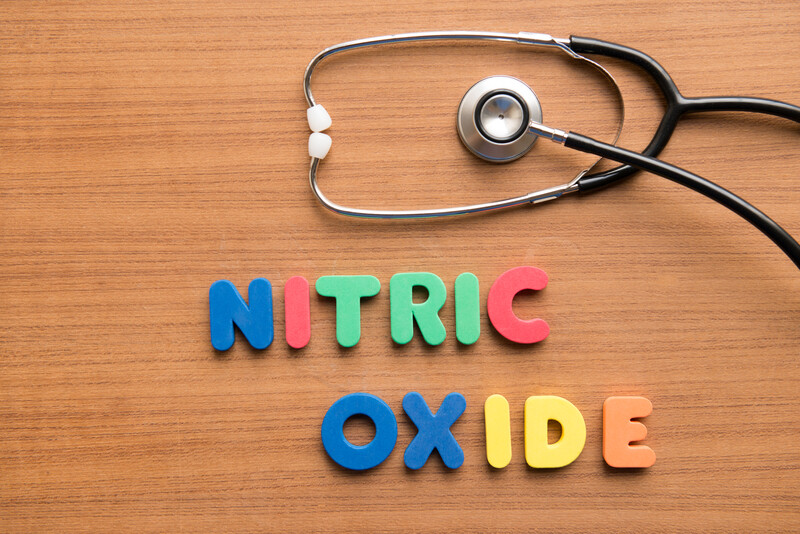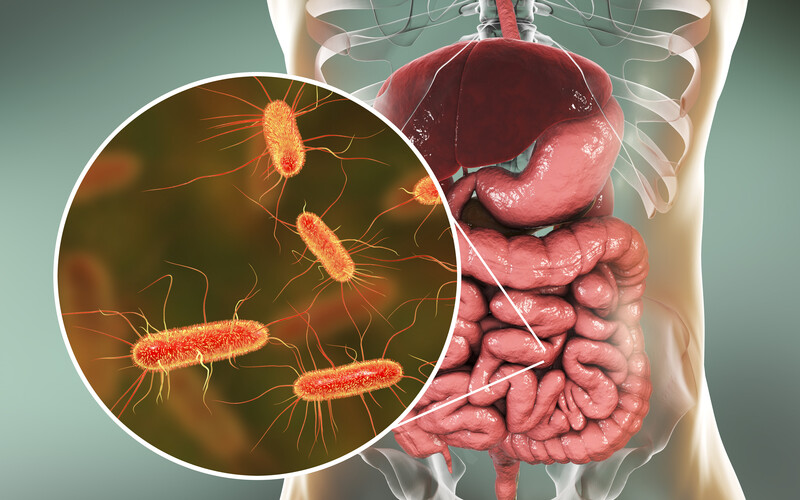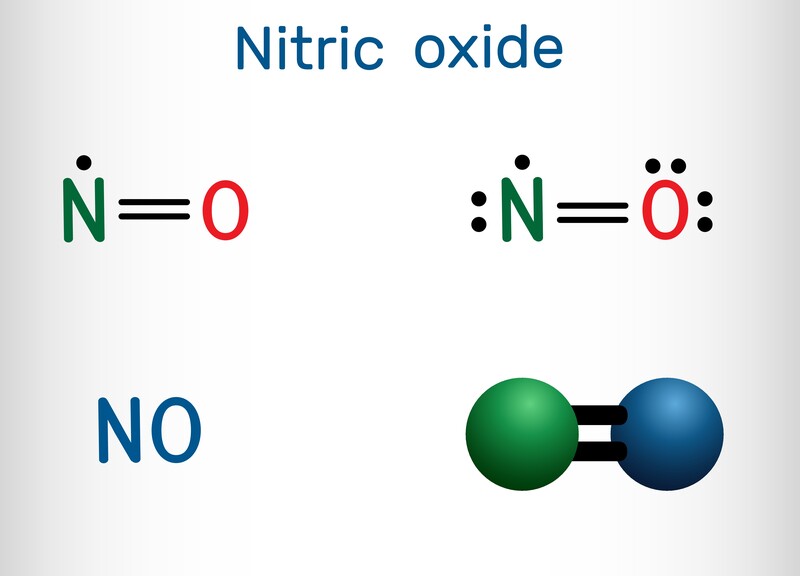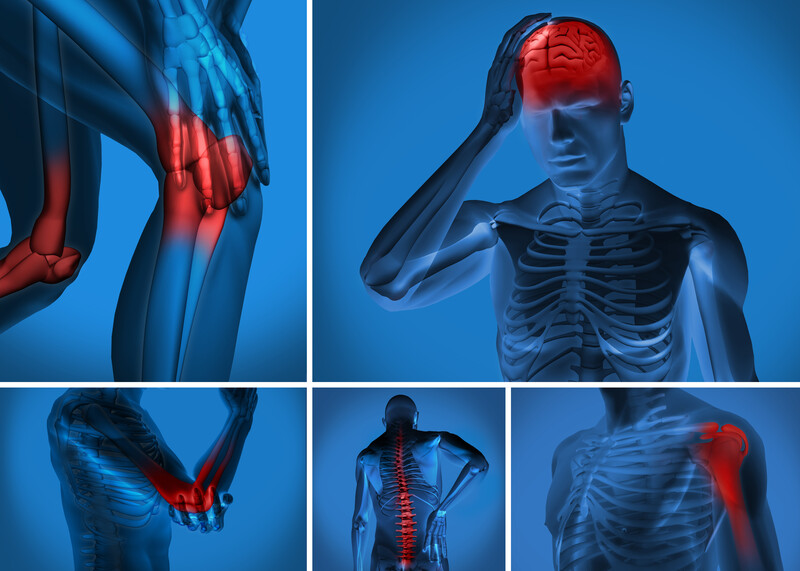(Article medically reviewed by Dr. Zac Hyde M.D)
10 Warning Signs of Low NO Levels in Men
While we rarely think of it this way, every action in our body has a specific set of “ingredients.”
That is, in order for our organs, glands, and muscles to do what they do, they need a particular set of nutrients, bodily fluids, and chemicals.
When it comes to healthy erections, one of the prime ingredients to the process is nitric oxide.
In this article, we’ll discuss ways to determine if your NO levels are secretly NO good. We’ll also go over 10 of the most common low nitric oxide symptoms.

What is Nitric Oxide (and What Does it Do?)
As you probably guessed from the name, nitric oxide is a gas, not a solid.
More specifically, it is a “free radical,” one of those pesky little substances that we hear so much about when discussing antioxidant foods.
But here’s the deal, whatever else it may be, nitric oxide is absolutely essential to male sexual health.
This is largely due to the fact that nitric oxide functions as a “signaling molecule.” Remember that discussion about “ingredients” from the introduction?
Well, when your brain and body begin to become sexually aroused, they need to send signals to your penile muscles that it’s time to get down to business.
More specifically, the smooth muscles in the penis need to relax, opening up the corporal cavernosal tissue so that blood can fill the organ and cause an erection.
So while many of us think it’s the blood that actually does all the “hard” work, that blood can’t do what it does without nitric oxide acting as a go-between.
This is why reduced nitric oxide production is, was, and always has been one of the leading causes of erectile dysfunction.
Nitric Oxide Side Effects (Real or Imagined?)
Back in the 1950s, nitrates and their various byproducts were thought to be among the most dangerous things you could put in your body.
However, considering this information was being conveyed by a chain-smoking surgeon general, it’s always good to remember that things change.
And change they did. By the 1980s, the discoverers of nitric oxide had won the Nobel Prize, and nitrate and nitrite were officially recognized as just another part of the body’s metabolic process – an essential part, in fact.
And while nitrates were previously thought to “infest” our body through processed meats, the bulk of them actually come from green veggies and other healthy foods.
Today, we know that nitrates and nitrites (which are metabolized and turn into NO) help lower blood pressure, dilate blood vessels, improve mitochondrial function, and more.
They are not some sort of carcinogenic boogeyman, but among the most important nutrients we can put into our body.
What Causes Low Nitric Oxide Symptoms?
But just because something is important doesn’t mean that it’s easy to get (especially with a modern Western diet).
You see, nitric oxide has an extremely short lifespan inside the body. How short? A few fractions of a millisecond, to be exact.
And while it’s true that nitrites and nitrates are common food preservatives to this day, the amounts found in foods are highly variable.
To put it simply: getting a proper amount of nitrates into your body can be pretty difficult.
Even if you were to eat an entirely plant-based diet high in natural nitrates there are still multiple internal factors determining whether or not you produce and utilize the resulting NO byproducts.
For Instance:
Low Nitric Oxide Symptoms – An Unhealthy Microbiome

It seems that with every year that passes, we become more aware of just how crucial our microbiomes are to our health.
If you’re not a South Park fan (or are yet to hear about the magic that is fecal microbiota transplants), the term microbiome refers to the trillions of bacterial cells that live on and in the human body.
In this case, we’re referring to the bacteria that live in your mouth, stomach, and intestines. You see, these little guys and gals are instrumental in our ability to break down food.
So, when we have the wrong kinds of bacteria, not enough, or too much, it can lead to a variety of problems.
In the case of NO production, oral bacteria – an extension of our gut microbiome – plays the largest role.
Unfortunately, many Americans are regular users of antiseptic mouthwash that eradicates these bacteria on a daily basis.
While oral hygiene is indeed important, there is no “selective” killer that takes out bad bacteria while leaving the good.
Overuse of Antacids or PPIs
Acidity also plays an important role in the NO breakdown process. You see, when our oral bacteria (see above) is working as intended, the saliva we swallow will be enriched with nitrate.
Upon entering the acid-rich stomach, this nitrate will be broken down into a gaseous form for distribution around the body.
However, if our stomach lacks proper acidity, this process will either not occur in sufficient quantities or fail to happen at all.
One of the main culprits in the reduction of stomach acid, of course, is antacid medication in the form of pills, drinks, and tablets.
This is another example of a “solution” to one problem being the direct cause of another.
But it gets worse. Some people are prescribed PPIs (or proton-pump inhibitors) like Prilosec, Nexium, and Prevacid due to chronic acid problems.
Unfortunately, studies show that these pills can drastically impact NO. However, they can also increase the risk of heart attack and stroke when taken for as little as three to five years!
Not the result you were expecting?
Well, think about it. These PPIs almost completely eliminate the production of nitric oxide in the stomach.
And while our discussion of the element has been boner-centric so far, one of its roles is to aid in blood vessel dilation.
Without it, you might be narrowing your arteries to the point of actually risking your life.
High Blood Pressure, Smoking and Obesity
Another way that your body produces and transports nitric oxide is through your blood vessel lining, also known as your endothelium.
Unfortunately, this surface is extremely sensitive to chemical balances inside your body. So when it perceives certain circumstances – like physical activity and low cholesterol – it ups the production of nitric oxide to cope.
Under conditions like atherosclerosis, high blood pressure, obesity, and nicotine addiction, your endothelium will crank your NO production way down.
As a result, you end up putting way more strain on your cardiovascular system while pretty much checking every box on the “future erectile dysfunction” list.
While these points can give us some idea who might be susceptible to low NO, there’s nothing “cut and dry” about a nitric oxide deficiency diagnosis.
You see, in recent years, the primary method of detecting NO (particularly salivary NO) has centered around test strips similar to those used for determining pH or blood sugar.
However, recent evidence – such as that presented in this study – indicates that, while these strips are excellent for detecting changes in NO levels, they are not effective at determining absolute values.
Moreover – as we’ve discussed – the use of mouthwash can drastically skew the results. All in all, those men who want to keep an eye on their nitric oxide levels need to be aware of the various symptoms of deficiency.
What symptoms, you ask? Well…
Low Nitric Oxide Symptoms: 10 Signs and Signals

So, we’ve clearly established that nitric oxide is something that we need.
For starters, it is critical to our sexual health, not just in signaling our erectile response but also in promoting blood vessel dilation, improving heart health, and lowering our overall blood pressure.
Moreover, nitric oxide and its parents (nitrate and nitrite) are essential elements to many bodily functions. Trust me – as we highlight some of the symptoms of NO deficiency, its wide-ranging effects will only become more apparent.
1: New Vision Problems
This low nitric oxide symptom can be hard to pin down at first, especially if you’re older or have always had vision issues of some sort.
However, we’re not talking about the normal degradation that occurs with age, but a sudden, somewhat drastic change in vision quality that seems to have no real cause.
You see, among its many other jobs, nitric oxide helps regulate intraocular pressure. Studies show that it does this by controlling how much fluid can flow to our eyes at a given time (source).
When NO levels are impeded, it can result in both too much and too little fluid ultimately reaching the eye. As intraocular pressure builds up, your vision starts to weaken.
2: Feeling “Hot Under the Collar”
Men don’t experience “menopause,” per se.
However, there are certain conditions in which we can see drastic changes in our baseline body temperature. One of the most common examples occurs when our ability to synthesize nitric oxide is somehow disrupted (see above).
As your central nervous system attempts to cope with the change, it’s common to feel as if you’re about to come down with a slight flu.
Whether it shows up on a thermometer will depend on how serious your NO situation is. Still, men who have experienced it say that it’s definitely something you’ll notice.
3: Increased Stress Levels
Stress is one of the deadliest killers in the world, affecting countless systems and organs in ways that often don’t become apparent until it’s too late.
To make matters worse, chronic stress has become a huge part of our culture. Indeed, we’re almost expected to work ourselves to death (and worry the entire time we’re doing it).
Some of the ways your body reacts when under chronic stress include increased blood pressure, heart rate surges, anxiety, and more.
These are both causes (and results) of low NO levels. So while it might be hard to identify which part of the ongoing cycle you’re currently occupying, the solution remains the same: reduce stress and increase nitric oxide.
4: Reduced Energy, Increased Pain

If you’ve ever spent any time on WebMD or similar “self-diagnosis” sites, you’ll note that “fatigue” is listed among everything from cancer to cough-drop side effects.
Still, that doesn’t mean you should ignore it when your “get up and go” decides to turn into “got up and went.”
You see, chronic fatigue is one of the first signs of nitric oxide deficiency.
After all, NO is directly responsible for transporting nutrients and oxygen all around our bodies. When these vital ingredients don’t get a ride to your brain, muscles, and organs, you’ll end up feeling much more tired than usual.
Then you have the “pain factor.”
If you suddenly discover that you’re sore, achy, and moving slow when there’s no real explanation for it, low NO is a likely reason why.
You see, when your cells are low on oxygen and your body isn’t getting the blood flow it needs, it can lead to excess inflammation that manifests in chronic aches and pains.
5: Extended Exercise Recovery Times
I can only hope that you’ve come to understand the sheer importance of exercise to male health at any age.
And we’re not talking about getting ripped either – merely keeping up enough lean muscle and aerobic activity to keep your heart pounding and your testosterone factory pumping.
However, if you do happen to be on the far side of 40, you’ve probably noticed that you don’t exactly “bounce back” from those gym sessions as easily as you used to.
Extended recovery times are natural to a certain degree, but when they become a real nuisance, it could be a sign of low nitric oxide.
As we’ve already mentioned, nitric oxide is tasked with moving nutrients around our bodies. When our muscles are sore and inflamed from a hard workout, they need those soothing nutrients faster and in much greater amounts.
If we lack the NO to get them there, the supply lines break down, and we end up taking days to recover.
6: Brain Fog and Memory Loss
Does it surprise you to know that there is a blood flow component to nearly every form of degenerative brain disease?
From Alzheimer’s to “vascular dementia,” reduced blood flow to the prefrontal cortex has been found in multiple studies to contribute to memory loss.
On the flip side, studies like this one from the Indian Journal of Medical Research have found that NO plays a big part in treating such conditions.
When pathways are open, and blood and nutrients are being sent to the brain in proper amounts, it reduces the overall risk of cognitive decline and the onset of dementia.
Therefore, feeling “foggy” or suffering from the occasional bout of memory issues could be a sign that your prefrontal cortex is feeling a bit starved for nutrients.
Though we’re not saying this will eventually lead to Alzheimer’s or dementia, it should be something you take seriously either way.
7: Issues That Signal a Blood Flow Problem
Given the discussion we’ve had so far (and general knowledge about sexual health), signs that your blood flow is inhibited should start ringing alarm bells for any man.
In fact, a lack of proper blood supply is the precursor to almost every chronic disease and age-related condition we experience.
Remember, NO acts as the signal that tells your blood vessels to expand while simultaneously telling your penis muscles to relax.
If either one of these isn’t happening with the efficiency it should, it might indicate that nitric oxide simply isn’t as abundant as it needs to be.
So, what sort of issues signal problems with blood flow?
- Cold fingers and toes
- Numbness, particularly at the extremities
- Muscles that hurt or seem weak when you move
- Pale skin color or skin with a bluish tint
- “Pins and needles” sensations on your skin
- Bulging veins
- Chest pain
8: High Blood Pressure
In sticking with our discussion about blood flow, it’s important to remember that high blood pressure is by no means just “another sign of aging.” Say you’re a nonsmoker, you’re not overweight, and you exercise regularly.
Why would you dismiss high blood pressure as something that’s inevitable? In reality, it’s always a sign that something might be seriously wrong.
Not to sound like a broken record, but it’s important to remember that nitric oxide is a vasodilator.
This means that it regulates the expanding and contracting of your blood vessels. As a result, it has a direct effect on your blood pressure.
So if you and your doctor notice that your diastolic and systolic numbers are on the rise, it might be time to consider NO therapy before things get any worse.
9: Depression Symptoms

I know it seems like the word “depression” gets thrown around a lot during medical discussions, but I think it’s important to remember that this is a serious health condition that has countless repercussions for the mind and body.
Moreover, it is just as likely to stem from a physical problem as it is a mental one.
For instance, a 2011 paper found a distinct relationship between nitric oxide production and major depressive disorder (source).
Specifically, it examined the relationship between cardiovascular risk factors, the presence of plasma NO, and the development of MDD.
Ultimately, it concluded that depressive signs could be an early indicator of nitric oxide issues. So if you don’t have a history of depression, your body might be trying to tell you something.
10: Sleep Problems & Insomnia
Sleep is far more important to our overall health and wellness than we give it credit for.
And while 20-year old you was capable of enjoying all-night ragers without noticing any side effects, you were actually doing serious damage that is only now catching up to you.
So, what happens when you aren’t getting proper sleep?
Well, for starters, your memory starts to go. After that, you begin to experience mood changes, including those that lead to anxiety and depression.
Next, you begin to develop concentration issues, high blood pressure, and weakened immunity. You might gain weight, lose your sex drive, and experience inflammation in your blood vessels.
Every single thing we’ve talked about so far!
And that’s where NO, in a seemingly endless cause-effect cycle, makes an appearance yet again.
You see, studies indicate that nitric oxide is also a powerful sleep-inducer. In particular, it is vital to what’s known as recovery sleep (source).
This is when our body performs all those duties that repair damage and shore up nutrients for the next day. So if insomnia is starting to creep into your life, it’s vital that you be proactive in dealing with it.
How to Increase Nitric Oxide
I’ve written extensively on how you can use foods, juices and OTC ED pills to optimize your nitric oxide levels and protect your physical and mental health.
Though I highly recommend you read these articles in their entirety, I will summarize them below so that we can leave this particular discussion on a positive note.
Make Beets Your New Best Friend
Beets are one of the best sources of nitric oxide in the world.
Not only do they have the potential to directly contribute to better, stronger erections, but they can also help stave off all of the terrible symptoms listed above.
Regular intake of beets (I prefer them juiced) has also been shown to reduce endothelial dysfunction and significantly boost overall nitrite concentrations.
If you’re looking for a quick fix to low NO, this is about as potent as solutions get.
“Stalk” the Supermarket Veggie Aisle

As we mentioned at the beginning of the article, the highest concentration of pro-boner / pro-blood flow nitrates isn’t processed pork, but veggies.
So if you’re concerned that you might have a nitric oxide problem, it’s a good idea to head over to the grocery store and start grabbing all the greens you can.
The best examples include things like arugula, which packs 480 mg of nitrates per 100 grams of bitter goodness.
Rhubarb, oak leaf, chard, bok choy, and spinach are other great examples of nitrate-rich veggies that can be cooked to suit thousands of different palates. So, don’t be afraid to expand your dietary horizons – your body will thank you.
Take Nitric Oxide Boosting Supplements
If you’re taking supplements to help improve your sexual function, chances are you might be inadvertently protecting your NO levels already.
After all, many of these boner-benefitting supplements either hinge completely or partially on promoting nitric oxide release.
Some of the best examples include Horny Goat Weed, which has been called “natural Viagra” by many researchers, and cayenne pepper, which has been proven to boost both NO and testosterone levels.
You might also consider taking regular doses of Ginseng, Niacin, and Arginine. However, if you want to see the full list, just click here.
Low Nitric Oxide Symptoms Conclusion
No matter how you slice it, nitric oxide is utterly essential to your ability to get an erection.
However, as we’ve shown, this little gas supports or is impacted by dozens of other bodily processes.
From sleep to blood pressure to exercise recovery, you simply aren’t going to be healthy without sufficient NO pumping through your veins.
Luckily, it’s never too late to give yourself an all-natural boost.
